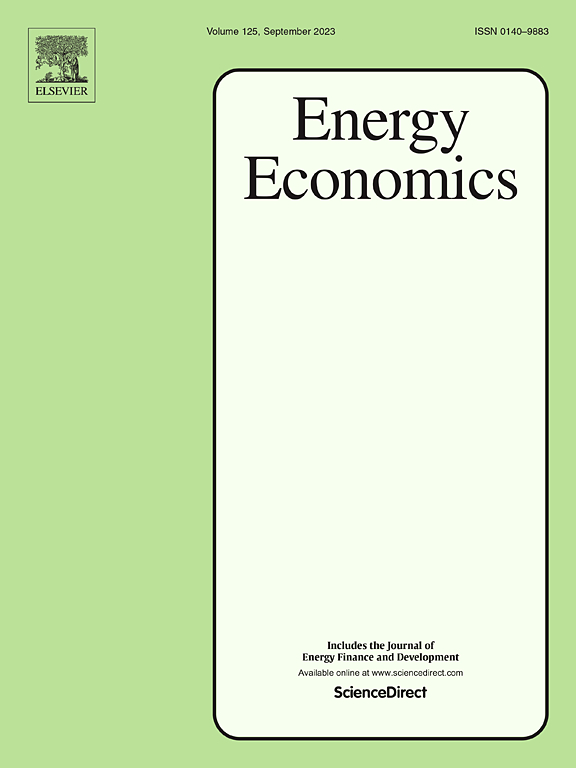太阳能生产的季节性双因子模型:气候极端事件分析
IF 14.2
2区 经济学
Q1 ECONOMICS
引用次数: 0
摘要
在本文中,我们提出了一个新的预测太阳能生产的随机模型,其中包含了与气候相关的关键不确定性。与现有的主要依赖于高斯或偏正态过程的方法不同,我们的模型采用了具有时变季节性漂移的偏几何布朗运动和混合分布后的误差项。此外,我们将温度变化整合为非均匀均值回归的Ornstein-Uhlenbeck过程,以解释其对光伏效率的动态影响。我们的模型的一个显著特征是包含了复合泊松型的跳跃分量,它明确地捕捉了极端气候事件对太阳能输出的影响。通过将我们的方法应用于来自28个国家的数据,我们证明我们的模型在准确预测极端条件下的能源生产方面明显优于两种基准方法。这一贡献提供了太阳能发电变异性的更全面和更现实的表现,改善了能源规划中的风险评估和决策。本文章由计算机程序翻译,如有差异,请以英文原文为准。
A seasonal two-factor model for solar energy production: A climate extreme events analysis
In this paper, we propose a novel stochastic model for forecasting solar energy production, incorporating key climate-related uncertainties. Unlike existing approaches, which primarily rely on Gaussian or skew-normal processes, our model employs a skew-geometric Brownian motion with a time-dependent seasonal drift and an error term following a mixture distribution. Additionally, we integrate temperature variations, modeled as a non-homogeneous mean-reverting Ornstein–Uhlenbeck process, to account for their dynamic impact on photovoltaic efficiency. A distinctive feature of our model is the inclusion of a jump component of compound Poisson type, which explicitly captures the influence of extreme climatic events on solar energy output. By applying our methodology to data from 28 countries, we demonstrate that our model significantly outperforms two benchmark approaches in accurately predicting energy production under extreme conditions. This contribution provides a more comprehensive and realistic representation of solar power variability, improving risk assessment and decision-making in energy planning.
求助全文
通过发布文献求助,成功后即可免费获取论文全文。
去求助
来源期刊

Energy Economics
ECONOMICS-
CiteScore
18.60
自引率
12.50%
发文量
524
期刊介绍:
Energy Economics is a field journal that focuses on energy economics and energy finance. It covers various themes including the exploitation, conversion, and use of energy, markets for energy commodities and derivatives, regulation and taxation, forecasting, environment and climate, international trade, development, and monetary policy. The journal welcomes contributions that utilize diverse methods such as experiments, surveys, econometrics, decomposition, simulation models, equilibrium models, optimization models, and analytical models. It publishes a combination of papers employing different methods to explore a wide range of topics. The journal's replication policy encourages the submission of replication studies, wherein researchers reproduce and extend the key results of original studies while explaining any differences. Energy Economics is indexed and abstracted in several databases including Environmental Abstracts, Fuel and Energy Abstracts, Social Sciences Citation Index, GEOBASE, Social & Behavioral Sciences, Journal of Economic Literature, INSPEC, and more.
 求助内容:
求助内容: 应助结果提醒方式:
应助结果提醒方式:


